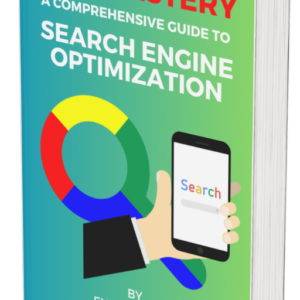For small and medium-sized businesses that depend on local customers, relevance is everything.
A restaurant in Lagos doesn’t need clicks from London, and a hair salon in Houston won’t benefit from impressions in New York.
This is where geo-targeted advertising steps in as one of the most efficient ways to stretch every marketing dollar.
Geo-targeted ads for local businesses ensure that campaigns reach only the people most likely to walk through the door, call the business, or make an immediate purchase.
The benefits of this approach are measurable.
According to Statista, spending on location-based mobile advertising is projected to surpass $200 billion globally by 2025.
That number reflects how critical geo-targeted strategies have become, not just for large companies, but also for local businesses competing in crowded markets.
The ability to tailor ads based on physical proximity or regional interests dramatically increases efficiency, reduces wasted spend, and drives higher conversions.
#1. Define Your Local Audience with Precision

The foundation of any successful geo-targeted campaign lies in knowing exactly who your local customers are.
Too many businesses run broad campaigns assuming that proximity alone is enough.
However, a well-defined local audience considers more than just location—it factors in demographics, intent, and behavior.
Geo-targeted ads for local businesses work best when they blend geographic filters with specific customer traits.
Start by mapping out your ideal customer persona.
For example, if you own a fitness studio, your audience might be people within a five-mile radius who are 25–45 years old and have an interest in wellness, exercise, or lifestyle apps.
Platforms like Google Ads and Meta Ads Manager allow you to combine location targeting with demographic and interest targeting, narrowing down who sees your ads.
This ensures your budget isn’t wasted on irrelevant clicks.
Another consideration is mobility. Are your customers typically stationary, like homeowners within a neighborhood, or on-the-go, such as commuters who might pass by your store daily?
Geo-targeted ads for local businesses can be tailored to either scenario.
Commuter-focused campaigns might target specific transit routes, while neighborhood-based campaigns could zero in on residential zones.
By taking the time to define your audience with precision, you’ll create a strong foundation for all the other tactics in this list.
Audience clarity ensures your campaigns are efficient, impactful, and consistently aligned with business goals.
#2. Optimize for Hyperlocal Radius Targeting
Radius targeting, often called “proximity targeting,” allows you to deliver ads to people within a specific distance from your business location.
This is one of the most effective techniques when using geo-targeted ads for local businesses, especially if foot traffic is the primary goal.
For example, a restaurant might run ads within a two-mile radius during lunchtime hours to capture nearby office workers looking for meal options.
Similarly, a hardware store could target homeowners within a 10-mile radius who might need supplies for weekend projects.
According to a Think with Google report, “near me” searches have grown over 150% in the last two years, showing that consumers increasingly expect relevant options close to where they are.
The key to hyperlocal success is setting the right radius. Too broad, and you risk diluting your relevance.
Too narrow, and you may miss potential customers. Testing different radius settings and measuring conversion rates helps strike the balance.
Pair this with ad copy that explicitly highlights proximity—phrases like “Just around the corner” or “2 minutes away” work well.
Geo-targeted ads for local businesses that leverage hyperlocal targeting create an immediacy effect.
Customers see your brand as not just an option, but the most convenient option. This psychological advantage often drives higher click-through rates and faster conversions.
#3. Leverage Local Keywords and Ad Copy
Even the most advanced targeting settings fall short if your ad copy doesn’t resonate with local audiences.
To truly maximize geo-targeted ads for local businesses, integrating local keywords and region-specific phrasing is essential.
Consider how customers search for products and services. Instead of typing “coffee shop,” many will type “coffee shop in Brooklyn” or “best café near Victoria Island.”
Incorporating these types of keywords directly into your campaigns increases relevance and improves ad rank in search platforms.
Tools like Google Keyword Planner allow you to filter keyword ideas by location, providing data on search terms that your local audience is actively using.
Beyond keywords, your ad copy should reflect local culture. Mentioning neighborhoods, landmarks, or events creates a sense of familiarity.
A dry cleaner might include “Serving Ikoyi for 15 years” in their ad headline, while a dental clinic could highlight “Trusted by families in Austin since 2005.”
These details make your ads stand out because they feel personal and community-driven.
Strong local ad copy also boosts trust. Customers are more likely to engage with a business that signals it understands their specific area.
Geo-targeted ads for local businesses are not just about showing up in the right place—they’re about sounding relevant once you get there.
#4. Use Location Extensions and Maps Integration
Visibility in search and maps is critical for local businesses.
Adding location extensions to your ads ensures customers see your physical address, distance, and directions directly within the search result.
When done correctly, this small adjustment can significantly increase click-through and conversion rates.
Geo-targeted ads for local businesses that include Google Ads location extensions show up prominently in Google Maps and Search, giving users a quick way to find your store.
For mobile users, the “Get Directions” button is often the deciding factor between browsing and visiting.
The value of maps integration goes beyond visibility. Location-based insights also help refine campaigns.

By analyzing which areas generate the most clicks or conversions, businesses can identify profitable zones and adjust budgets accordingly.
For example, a home cleaning service might discover that certain neighborhoods respond more positively to ads and choose to increase bids in those locations.
Customers increasingly rely on real-time convenience.
According to Google, nearly 76% of people who conduct a local search on their smartphone visit a related business within 24 hours.
That statistic underscores why location extensions and map visibility are non-negotiables for effective local ad campaigns.
When executed properly, location extensions don’t just direct customers—they position your business as the obvious choice in their immediate area.
#5. Tailor Campaign Timing to Local Behaviors
Timing is a powerful variable in geo-targeted advertising. While location ensures your ads reach the right people, timing ensures they reach them at the right moment.
Geo-targeted ads for local businesses gain maximum effectiveness when campaigns are scheduled around local patterns and customer routines.
For example, a restaurant could increase bids during lunch and dinner hours while lowering them mid-morning or late at night.
A spa might run promotions during weekends when customers are more likely to have free time.
Retail stores can tie ads to seasonal peaks, such as back-to-school shopping or holiday gift-buying.
Geo-targeting platforms allow advertisers to schedule ads by both time of day and day of week.
Combining this with location filters ensures precision. A local car repair shop might run ads between 7 a.m. and 9 a.m., targeting commuters passing nearby who could drop off their cars before work.
Seasonal adjustments are equally critical. If you operate in an area with strong weather shifts, tailoring ads to those conditions boosts results.
For example, promoting winter tires in colder months or outdoor dining during warmer seasons makes your ads feel timely and relevant.
The goal is to sync advertising activity with customer intent.
By aligning campaigns with predictable local behaviors, businesses maximize ROI while minimizing wasted spend.
Timing isn’t just a nice add-on—it’s a strategic advantage that multiplies the impact of geo-targeted ads for local businesses.
#6. Experiment with Multiple Platforms for Local Reach
While Google Ads and Facebook are the most common platforms for local targeting, they aren’t the only options.
Geo-targeted ads for local businesses can thrive across multiple platforms, each with unique advantages.
For instance, Waze Ads allow you to promote directly to drivers navigating near your location.
Yelp Ads help businesses capture intent-driven searches for restaurants, salons, and service providers.
TikTok and Instagram offer hyperlocal options that can pair viral-style content with geo-targeting to attract younger demographics.
Each platform’s audience and ad format should align with your business objectives. A café might benefit from Instagram Story ads showing daily specials within a set radius.
A plumbing service could prioritize Google Ads because search intent for “plumber near me” is high.
It’s also wise to test combinations of platforms.
Running ads on both Google and Meta often creates a multi-touch funnel—customers see a search ad when they’re actively looking and a social ad when browsing casually.
This dual exposure builds familiarity and increases the chances of conversion.
Spreading your campaigns across platforms also safeguards against changes in algorithms or rising costs in a single channel.
A diversified approach ensures that geo-targeted ads for local businesses consistently reach audiences in multiple contexts, reinforcing brand visibility without relying solely on one platform.
#7. Track Performance with Local Analytics
No campaign can succeed without measurement.
Tracking and analyzing data specific to local campaigns is the only way to confirm whether your geo-targeted ads for local businesses are delivering results.
Key performance indicators (KPIs) to monitor include click-through rate (CTR), cost per conversion, and return on ad spend (ROAS).
However, for local businesses, there’s an additional layer—offline conversions. Are people walking into your store after clicking on your ad? Are phone calls increasing?

Tools like Google Ads offline conversion tracking and call-tracking software provide answers.
Analytics should also segment by location. If your business operates across multiple neighborhoods or branches, compare performance across areas.
You may find that ads resonate better in one community than another, guiding where to allocate more budget.
Another powerful technique is using store visit conversion data, which platforms like Google and Facebook can provide when privacy thresholds are met.
This metric shows whether digital impressions lead to physical foot traffic, which is often the ultimate goal of geo-targeted ads for local businesses.
When businesses rely on accurate local analytics, they can make smarter optimizations.
This means shifting spend to high-performing areas, adjusting radius settings, or modifying ad copy for certain neighborhoods.
Data isn’t just about confirming results—it’s about revealing opportunities for continuous growth.
Conclusion
Local businesses face unique challenges—limited budgets, intense competition, and a reliance on community trust.
But with the right strategy, geo-targeted ads for local businesses provide a level playing field.
They ensure every dollar works harder by connecting you with customers who are not only nearby but also ready to act.
From defining your audience and using hyperlocal radius targeting to leveraging local keywords, optimizing map integration, tailoring timing, diversifying platforms, and tracking analytics—each tip in this guide is designed to improve precision and impact.
The key is to treat geo-targeted advertising as an evolving practice, not a one-time setup.
As consumer behaviors shift and technology advances, businesses that commit to refining their local ad strategies will see the biggest gains.
Geo-targeted ads for local businesses aren’t just about visibility—they’re about building lasting connections with the community you serve.









